Understanding RNA: The Basics
RNA, or Ribonucleic Acid, is a crucial molecule present in all living cells, playing a pivotal role in the genetic machinery. Unlike DNA, RNA is typically single-stranded and is involved in various cellular functions, including protein synthesis, gene regulation, and as a carrier of genetic information. Each RNA nucleotide comprises three parts: a sugar (ribose), a phosphate group, and a nitrogen-containing base (adenine, uracil, guanine, and cytosine). RNA’s structure allows it to form complementary base pairs, even though it is single-stranded, enabling it to assume complex shapes for its diverse roles.
The Structure of RNA
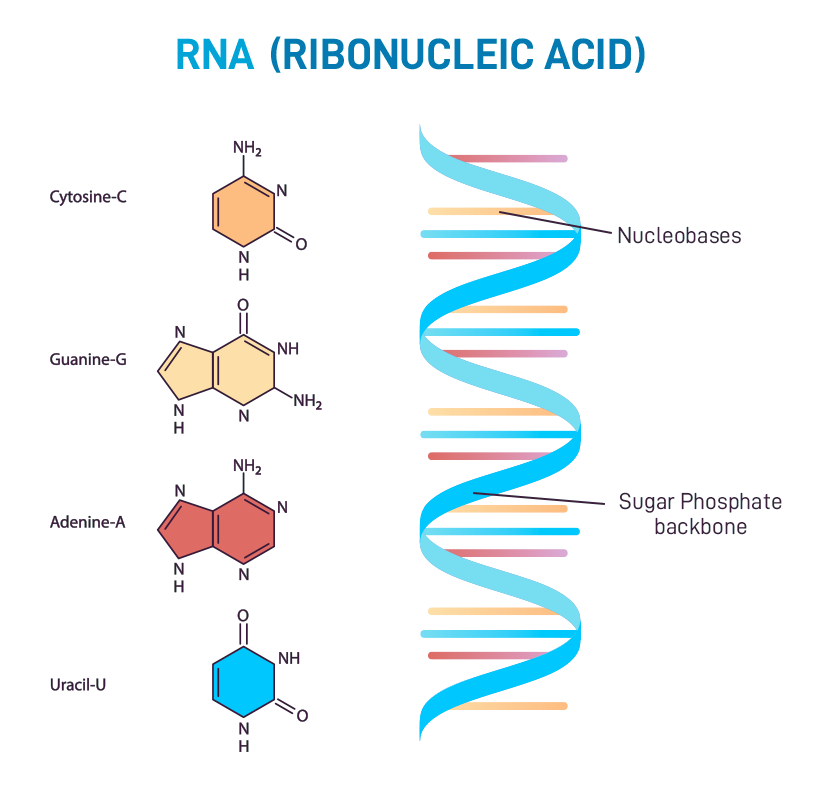
RNA, or Ribonucleic Acid, is a crucial biomolecule composed of ribonucleotides linked by phosphodiester bonds. Each ribonucleotide in RNA consists of a ribose sugar, a phosphate group, and one of four nitrogenous bases: adenine (A), guanine (G), cytosine (C), and uracil (U), the latter distinguishing RNA from DNA, which contains thymine instead of uracil. RNA is generally single-stranded, which allows it to fold into complex three-dimensional shapes necessary for its various functions, including coding, decoding, regulation, and expression of genes. Unlike DNA, RNA is more labile, meaning it’s more easily broken down, reflecting its roles in transient processes like protein synthesis.
The Role of RNA in Cells
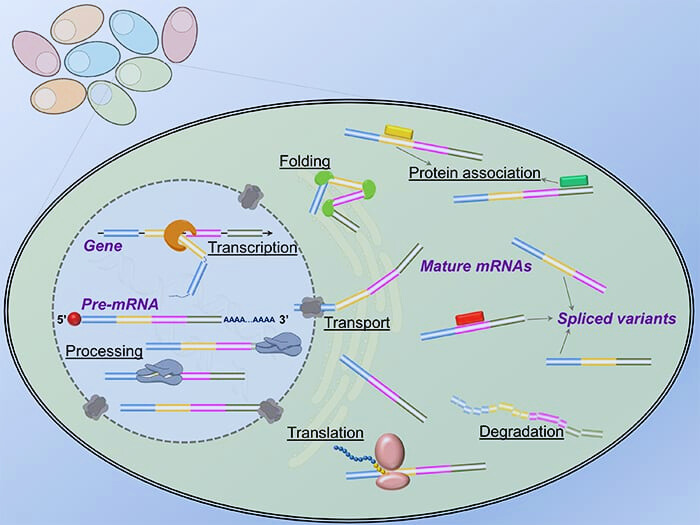
RNA plays a multifaceted role in cells, touching nearly every aspect of cellular function. It carries genetic information crucial for the synthesis of proteins, acting as a messenger between DNA and the ribosomes where proteins are made. Messenger RNA (mRNA) reads the genetic code from DNA and carries these instructions to the ribosome, facilitating the translation process where the amino acid sequence of proteins is determined. RNA is also involved in the regulation and expression of genes, playing a key role in the control of gene expression levels within a cell. Beyond these functions, RNA molecules are instrumental in catalysis, acting as enzymes (ribozymes) that can speed up chemical reactions within the cell without being consumed in the process. This versatility makes RNA a crucial cellular workhorse, integral to both the genetic and functional scaffolding of life.
The Sweet Component: Ribose Sugar
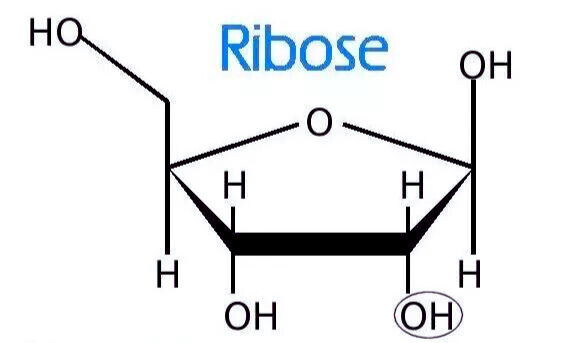
Ribose sugar, a vital biological molecule, is a simple sugar or monosaccharide distinguished by its five-carbon structure (pentose) and its role as a building block of nucleic acids, RNA, and DNA. Unlike the more common table sugars, which are hexoses (six-carbon sugars), ribose is a pentose sugar, meaning it has five carbon atoms. This structural distinction makes ribose crucial for life, as it forms the backbone of RNA and is involved in regulating gene expression.
D-ribose, a specific form of ribose, has an aldopentose structure, allowing it to participate readily in biological processes. Although it is sweet, ribose is less sweet than glucose and is considered a polar compound essential for forming nucleotides. Its unique chemical nature distinguishes it significantly from six-carbon sugars, highlighting its non-conventional role in the body.
The evolutionary selection of ribose as the sugar component in nucleic acids underscores its fundamental importance, possibly explained by molecular modeling that favors ribose’s structure for these roles. Ribose is naturally occurring, tastes sweet, and is generally safe with very low side effects, making it a unique sugar with pivotal biological roles.
What Makes Ribose Special?
Ribose is unique due to its pivotal role in biological processes and its structural characteristics. It is a simple sugar with the molecular formula C5H10O5, featuring a five-member ring structure where carbons 1 and 4 are joined through a hydroxyl oxygen. This five-carbon sugar, or pentose, is critical for the synthesis of nucleic acids, especially RNA, playing a fundamental role in the storage and transmission of genetic information.
One of ribose’s unique properties is its ability to diffuse through cell membranes more efficiently than other pentose sugars, a characteristic that may have significant implications for its biological functions. Additionally, ribose forms the backbone of RNA molecules in cellular processes, distinguishing it from deoxyribose, which serves a similar role in DNA. This fundamental difference underscores ribose’s essential role in various cellular mechanisms, including protein synthesis and gene expression.
Ribose vs. Deoxyribose
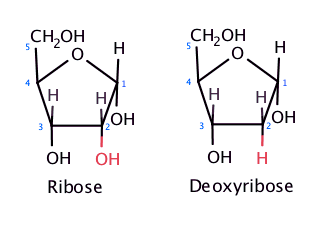
Ribose and deoxyribose are both pentose sugars essential for life, playing critical roles in the structure of nucleic acids. The primary difference between them lies in a single oxygen atom: ribose has an OH (hydroxyl) group on its 2nd carbon, whereas deoxyribose has just a hydrogen atom in the same position, hence the prefix “deoxy-” indicating the absence of an oxygen atom. This structural difference impacts their reactivity and stability; ribose is more reactive than deoxyribose, making RNA (which contains ribose) generally more labile compared to DNA (which contains deoxyribose). This difference in stability is also theorized to be why DNA, rather than RNA, became the primary carrier of genetic information in most life forms. Both sugars are vital for the formation of the backbone of nucleic acid chains, with their respective sugars contributing to the structural integrity and function of DNA and RNA molecules.
The Significance of Ribose in RNA
Ribose is a crucial component of ribonucleic acid (RNA), serving as the sugar backbone that, together with phosphate groups, forms the structural framework of RNA molecules. This five-carbon sugar is essential for several reasons:
- Structural Role: Ribose links with nucleotide bases through phosphodiester bonds to create the backbone of RNA strands. This structure is vital for the stability and function of RNA molecules, allowing them to play various roles within the cell, including coding, decoding, regulation, and expression of genes.
- Chemical Properties: The presence of an OH group on the 2′ carbon of ribose, which is absent in deoxyribose (the sugar found in DNA), makes RNA more chemically reactive. This reactivity allows RNA to participate in various biochemical reactions within the cell, but it also makes RNA less stable than DNA, influencing the roles they play in cells. RNA’s structure suits its functions in processes that require rapid synthesis and degradation, such as protein synthesis and regulation of gene expression.
- Evolutionary Significance: The chemical properties of ribose and its role in RNA suggest that RNA might have played a crucial role in the early stages of life’s evolution, potentially preceding DNA in carrying genetic information. This theory is supported by RNA’s ability to store genetic information, catalyze chemical reactions, and regulate gene expression, indicating its versatility and essential role in the origin of life.
Chemical Structure and Function
Ribose in RNA is a pivotal molecule that plays a critical role in various biological processes. Its chemical structure, a five-carbon sugar, contributes to RNA’s unique properties and functions. Ribose differs from deoxyribose (found in DNA) by having an additional hydroxyl group (-OH) at the 2′ carbon position. This distinction makes RNA more chemically reactive and less stable than DNA, affecting RNA’s structural flexibility and its various functions within the cell.
The presence of ribose in RNA enables the formation of the RNA backbone through alternating phosphate and ribose sugar units, which is essential for the structure of RNA molecules. This backbone structure allows RNA to adopt various forms, including single-stranded, double-stranded, and complex three-dimensional shapes, facilitating its diverse roles in the cell. These roles include coding, decoding, regulation, and expression of genes. The hydroxyl group at the 2′ position of ribose also contributes to the catalytic activity of some RNA molecules, such as ribozymes, highlighting the importance of ribose’s chemical structure in RNA’s function.
Ribose and RNA’s Flexibility
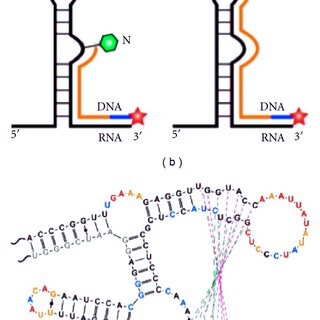
Ribose plays a crucial role in the structural flexibility of RNA, distinguishing it significantly from DNA. The presence of the 2′ hydroxyl group in ribose not only makes RNA more chemically reactive but also contributes to its structural versatility and flexibility. This additional hydroxyl group facilitates RNA’s ability to form a wide variety of secondary structures, such as hairpins and loops, and also participates in intramolecular interactions that are not possible for DNA. Consequently, RNA can adopt multiple conformations, enabling it to perform a diverse range of functions beyond genetic information storage, including catalysis, regulation of gene expression, and acting as a key player in protein synthesis. The inherent lability introduced by the 2′ hydroxyl group in ribose underscores RNA’s dynamic nature and its capacity for structural changes, which are essential for its functional versatility in biological systems.
Ribose: Beyond Genetics
Ribose, a sugar molecule integral to the structure of RNA, plays a pivotal role beyond its genetic functions. While commonly recognized for its presence in RNA where it forms the sugar-phosphate backbone alongside nucleobases, ribose’s significance extends into prebiotic chemistry and medical therapeutics. Studies suggest that ribose was a critical precursor in the prebiotic world, serving as the backbone to which nucleobases attached, giving rise to the genetic alphabet essential for life as we know it.
Beyond its foundational role in genetics, ribose, and related compounds are also explored in medical research, particularly in the context of cancer therapy. Poly(ADP-ribose) polymerase (PARP) inhibitors, which target DNA repair mechanisms, have revolutionized treatment paradigms for various cancer types.
These inhibitors exploit the vulnerability in cancer cells’ DNA repair pathways, offering a promising therapeutic avenue beyond conventional treatments. This highlights ribose’s critical role not only in the fabric of genetic material but also in the advancement of medical science, demonstrating its importance far beyond the confines of genetics.
Ribose in Energy Metabolism
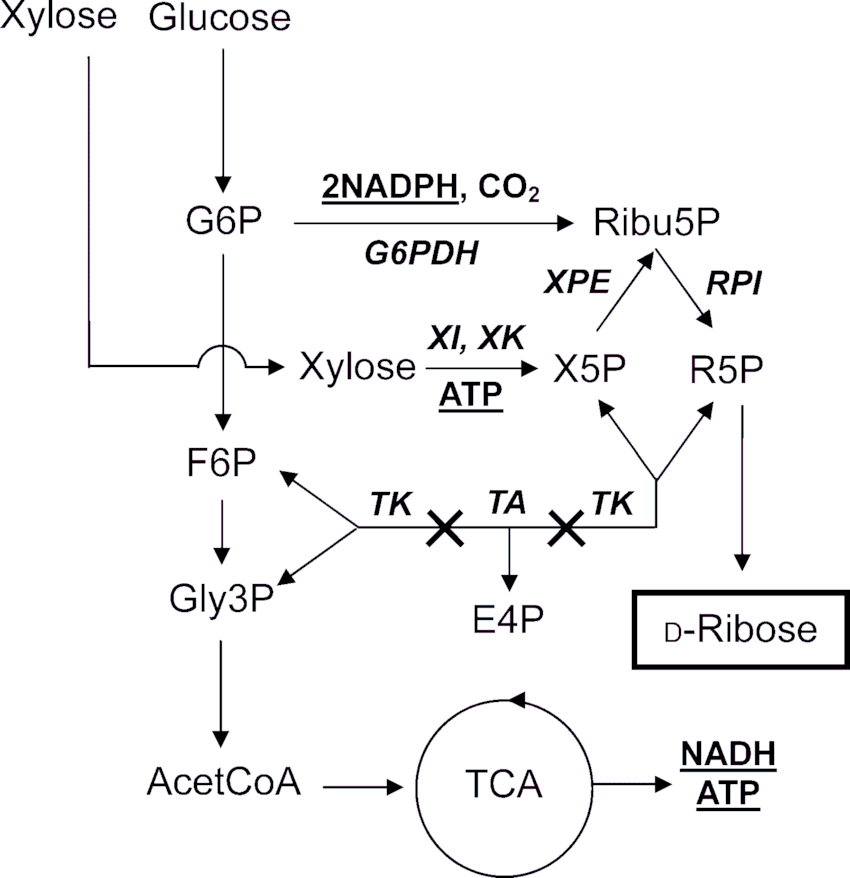
D-ribose is a crucial monosaccharide naturally occurring in all living cells, playing a significant role in energy metabolism, particularly within the mitochondria, the powerhouse of the cell. It is essential for the synthesis of adenosine triphosphate (ATP), the primary energy carrier in cells. ATP production is vital for maintaining cellular integrity and function, as it provides the necessary energy for various physiological processes.
Evidence suggests that D-ribose supplementation may enhance energy production in heart muscle cells, underscoring its potential benefits in conditions where energy supply is compromised, such as cardiovascular diseases. The improved ATP production can lead to better heart function and overall energy levels. Beyond its critical role in ATP synthesis, D-ribose’s presence as a component of DNA and RNA highlights its importance in genetic material and cellular processes. This underscores the broad spectrum of D-Ribose’s impact on health and its potential therapeutic applications in energy metabolism disorders and beyond.
Therapeutic Uses of Ribose
Ribose, specifically D-ribose, is a simple sugar vital for the body’s energy production processes. It has several potential therapeutic uses:
- Heart Health: D-ribose may improve heart function in people with heart diseases by enhancing ATP levels in cardiac cells, aiding in recovery from heart conditions like congestive heart failure.
- Energy Recovery: It may help in the recovery of energy stores in cells, potentially benefiting individuals with chronic fatigue syndrome and fibromyalgia by addressing energy deficits.
- Exercise and Physical Performance: D-ribose supplementation might support faster recovery of energy stores in muscles after exercise, thus potentially improving physical performance and endurance.
- Congestive Heart Failure: D-ribose serves roles in providing phosphoribosyl pyrophosphate (PRPP) and adenine nucleotide in models of reversible myocardial injury, which could have implications for treating congestive heart failure and related heart conditions.
These therapeutic uses underscore the importance of D-ribose in energy metabolism and its potential in managing various health conditions, particularly those associated with energy production and heart health.
The Evolutionary Choice of Ribose
Ribose was selected as the sugar component of nucleic acids (RNA and DNA) during the early stages of life’s evolution due to specific characteristics that made it particularly suitable for these vital roles. This selection is a fundamental aspect of the prebiotic chemistry that led to life as we know it. Key reasons for ribose’s selection include its ability to form stable ring structures essential for constructing the nucleotide chains of RNA and DNA, and its prebiotic availability, making it a plausible candidate for early biochemical processes. Molecular modeling and evolutionary studies suggest that ribose’s unique chemical properties facilitated the formation of the complex molecules necessary for life, supporting its exclusive role in nucleic acids. The natural selection of ribose, amidst various sugar molecules, underscores its optimal fit in the biochemical framework necessary for genetic information storage and transfer, essential for life’s development on Earth.
Stability and Evolutionary Advantages
Ribose was selected as a precursor to life due to its crucial role in the phosphorylation process in the precellular era and protocells. This selection underscores the significance of ribose in evolution, as cells utilize D-ribose-5 for vital functions. The choice of ribose, a simple carbohydrate like glucose, over other sugars indicates its foundational role in the emergence of RNA before DNA, highlighting ribose’s evolutionary precedence.
D-ribose’s presence in cells, particularly in mitochondria, is essential for energy production, demonstrating its integral role in cellular function and survival. Furthermore, the 2′-hydroxyl group of ribose in RNA, despite making RNA more hydrolytically labile than DNA, plays a critical role in biological functions, offering a balance between stability and functional versatility.
Ribose’s cytotoxic nature and the cell’s stringent control over its availability suggest a finely tuned evolutionary mechanism to balance its benefits against potential risks. This balance facilitated the evolution of large informational macromolecules, despite the inherent stability limits imposed by the 2′-OH group.
Conclusion: The Sweetness of Discovery
Understanding the role of ribose in RNA sheds light on the intricate dance of molecules that underpins life. As we delve deeper into genetics, the significance of these discoveries only grows, promising a future rich with sweet scientific advancements.
Read also: How Many Months Have 28 Days?
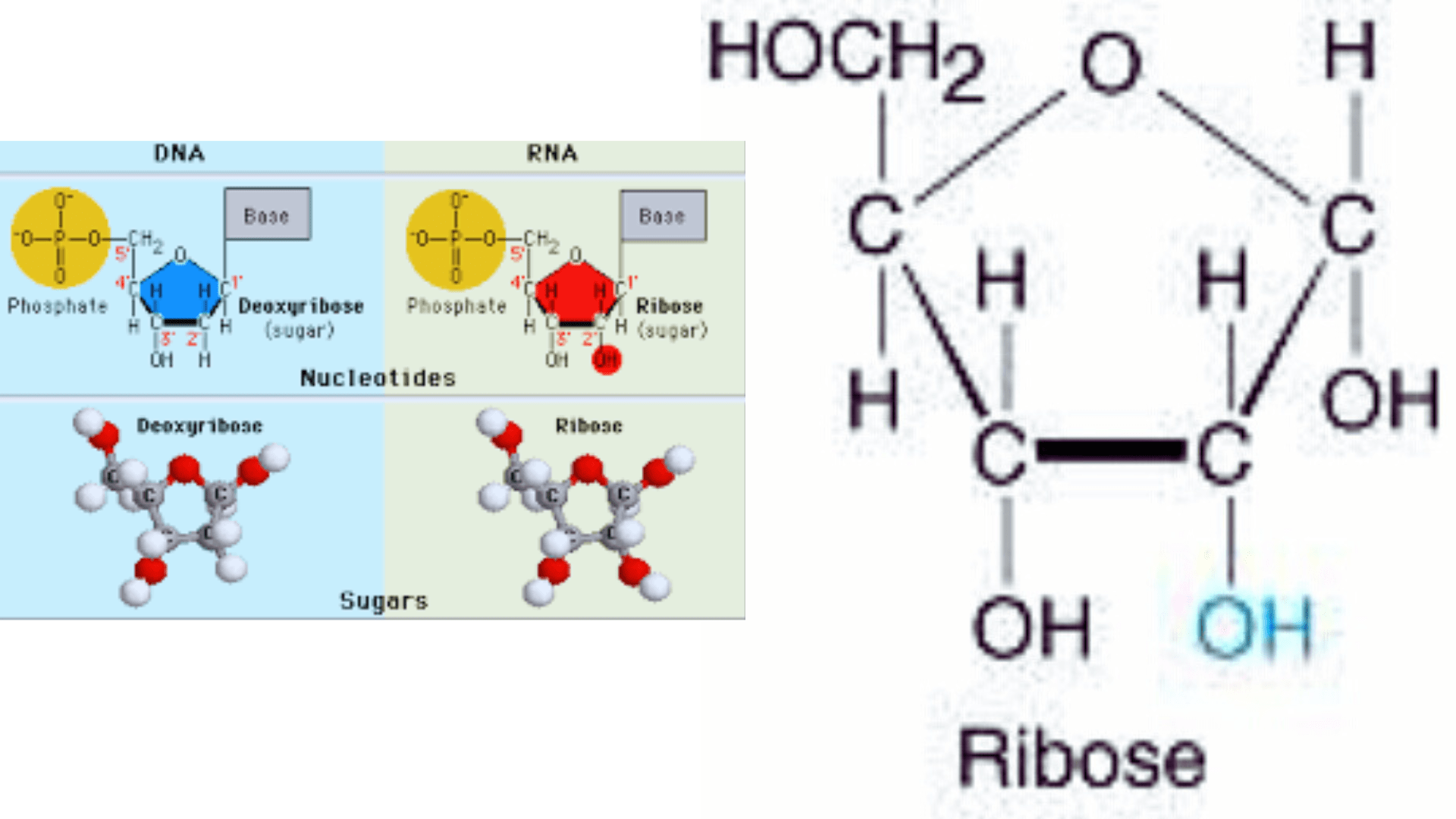




Hi there! vikiwhatis.com
Did you know that it is possible to send proposal perfectly legit? We offer a new legal method of sending letters via feedback forms.
Messages from Feedback Forms are not classified as spam due to the fact that they are considered important.
You have the chance to use our service without having to pay anything.
We can send up to 50,000 messages on your instruction.
The cost of sending one million messages is $59.
This offer is automatically generated.
We only use chat for communication.
Contact us.
Telegram – https://t.me/FeedbackFormEU
Skype live:contactform_18